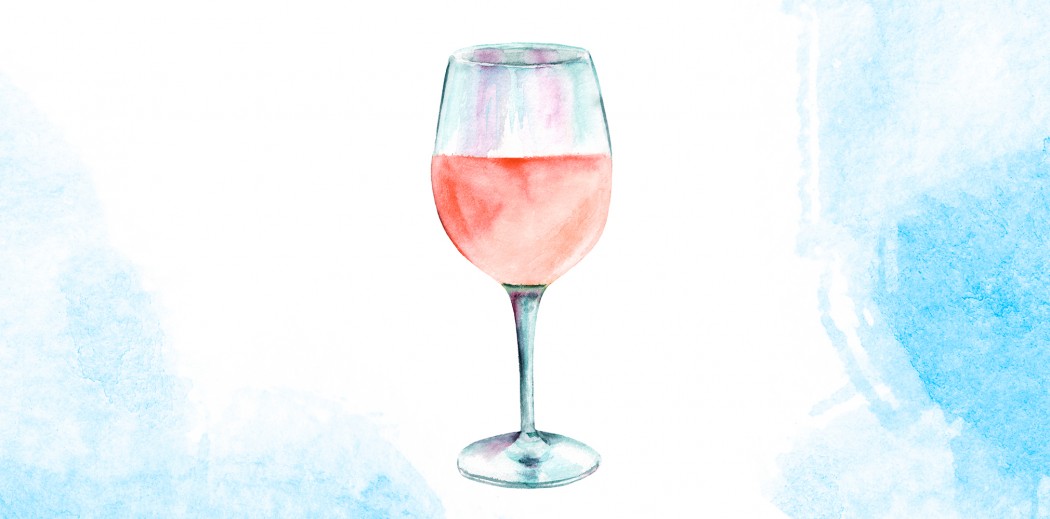Rosé Wine: easy-drinking, pink swill loved by all and hated by none. Pairs well with warm afternoon lunches, hot summer sun, and crisp, salty sea breezes, right? Well, yes… however, your favorite pink-hued juice is actually much more complex than you may think. Believe it or not, there are actually three ways your favorite bottles of rosé wine get their gorgeous shade of color. Let us count the ways in which our beloved bottles of pink find their way into our balmy, wine-seeking hands. And before we go any further — yes, rosé is certainly synonymous with summer weather, but it doesn’t stop there. This multifaceted style of wine is incredibly versatile, making it perfect for an array of food and wine pairings throughout all 12 months of the year!
Here are the ways in which your favorite red wine grapes become your precious pink thirst quenchers:
Direct Press/Vin Gris
Think: white wine production methods but with red grapes. Rather than crushing up red grapes with skins, stems and seeds, the winemaker will press the juice directly out from the grapes, leaving the rest of the grape parts behind. Due to the fact that this clear juice has lived within red grape skins, the juice will be naturally, albeit extremely lightly, pigmented. Known as “vin gris” in French, this method is used to produce the lightest colored rosés on the market. Rosé of Pinot Noir is frequently produced this way, including Blanc de Noirs Champagne, as well as various rosés in Provence.
Skin Contact
Basically, red wine production with a shorter maceration time. This is definitely the most popular way to commercially make rosé wines. Essentially a baby red, the production method is the same, though the juice will generally only remain in contact with the skins for up to 24 hours. Many regions of the world use the skin contact method, including Provence, Languedoc-Roussillon, and regions all over Italy. For a fun, fresh example, check out the Miravigna Rosé from Italy’s coastal region of Abruzzo. This Italian twist on rosé, made from 100 percent Montepulciano grapes, is produced by Casal Thaulero; not only is the Azienda the oldest winery in the region, it was also the first to bottle wines following newly implemented DOC regulations — meaning this wine not only has street cred, but it’s on the cutting edge of modern Italian winemaking styles.
Saignée
Don’t be freaked out by the fact that this winemaking style translates to “bleed;” we promise it’s worth it! With the saignée method, the end result is actually two wines: a concentrated, full-bodied red, as well as a rosé. Basically, after a few hours of macerating red grapes for red wine production, the winemaker may decide that he or she desires a bigger, bolder red, therefore, will “bleed” some of the juice off of the must and vinify it separately. The juice still in contact with the skins, stems and seeds will go on to become a fuller-bodied red, while the saignée juice becomes a lighter, fresher rosé.
Okay, so technically, there is a fourth way to make rosé, but it’s extremely uncommon (and generally prohibited) in many regions of the world. It’s as simple as you’d think: take some white wine, add some red wine, stir it up and there you have it. While generally frowned upon in most parts of the world, rare exceptions, such as rosé production in Champagne, and New World regions with more lax winemaking rules, allow for said practice. As simple as this may sound, we don’t recommend doing this at home. Stick to your preferred pink juices made by the pros!









Many wineries when producing red wines, bleed off, that is reduce the quantity of ‘must’, AKA grape juice to concentrate the flavors and colors of their red wines. The quantity decanted off depends and is done a short time after the grapes have been crushed and the resulting juice at that time will have various shades of pink and thus made into a rose wine. Rose wine like white wines are fermented at cooler temperatures to help retain their freshness and lightness for which they’re known and appreciated. The red grapes and ‘must’ that become the red wine made with concentrated juice will tend to be richer and more full bodied as their starting ratio of juice to grape skins will be smaller.
So what about dry roses’? Are they made any differently?